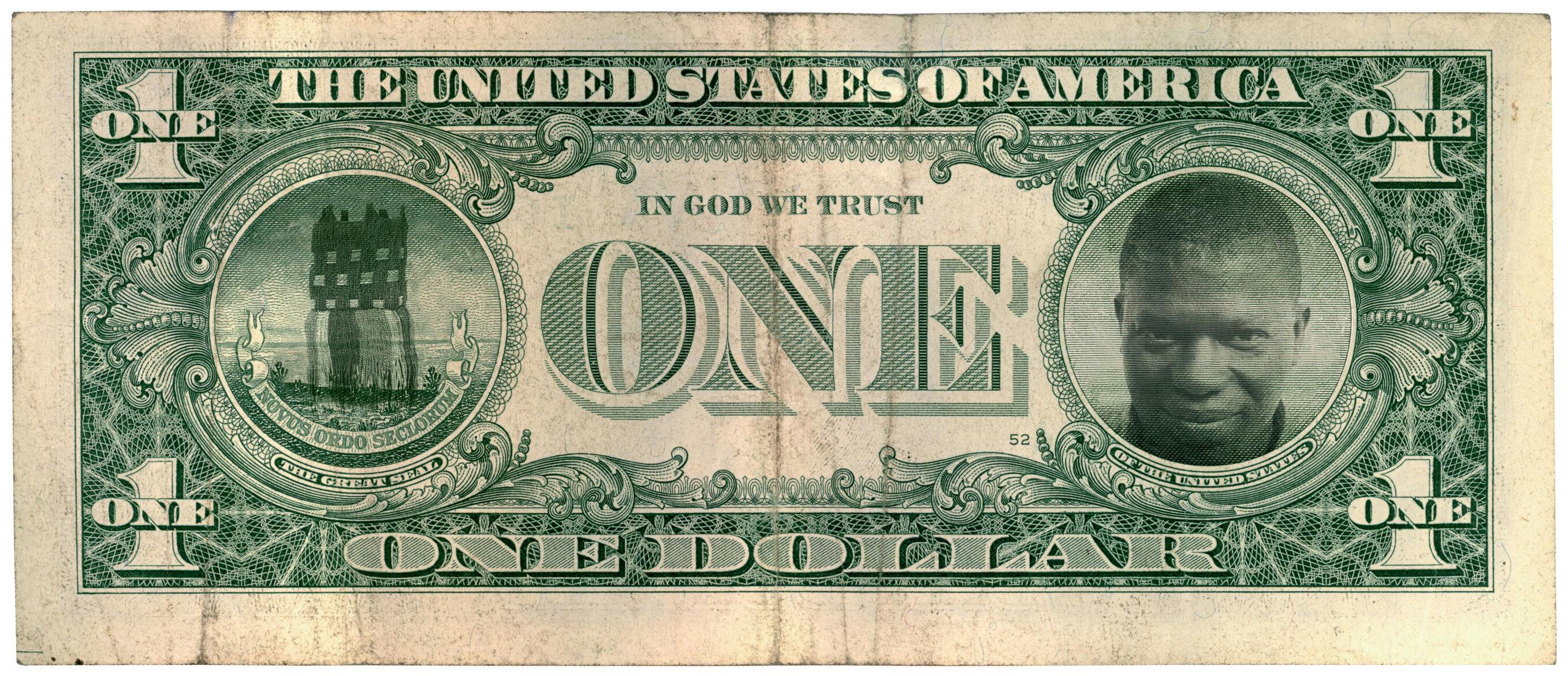Sense of Humor
While humor is often used to meditate on daily life and troubles, it can also be a tool to reflect on social and political issues. The works grouped here demonstrate how artists employ humor to reconsider perceptions of the material and art worlds—performing a transgression through irony, absurdity, satire, and play in order to amuse.
Sense of Humor was organized by Kiki Teshome, Curatorial Assistant.
Some artists use text or titles to project a wry message
This image, which was probably used as advertisement for his commercial studio practice, contextualizes Van Der Zee’s work as a service used to generate income. The playful text wards off requests for his free services. The joke disrupts the earnest and pleasant expression on the young woman’s face.
Pope.L manipulates language to absurd ends in this series of text-based works.
The nonsensical phrases that appear in “Skin Set Drawings” (1997–present) demonstrate the limitations of language to define and describe racial categories. The repetitive tracing of the words “White People Are Angles On Fire” in red, orange, and yellow marker almost camouflages the artist’s use of malapropism.
Adrian Piper similarly confronts viewers with a stinging message. Playing on the racialized and gendered assumptions made about her based on her appearance, Piper’s use of bold, graphic text—both in form and content—provides a jocular complement to the work’s title.
In photography, a double exposure describes the process of layering two exposures on top of one another to produce a single image. In using this term in his “Deuce” portrait series, which captured twins and New York City residents with similar appearances, Shabazz mines his medium for puns.
Meschac Gaba proposes a new form of currency by comedically imposing images of his artwork and himself onto copies of U.S. paper bills. By self-inserting into a placeholder normally reserved for symbols of national significance, Gaba also points to discrepancies between economic and cultural value across the globe.
Colescott depicts himself and dancing bikini-clad skeletons across from the revered painter Vincent Van Gogh. The large-scale work exemplifies how artists humorously address the historical exclusion of people of color from art history and assert their creative agency. It is demonstrating how artists are in on the joke.
Sense of Humor was organized by Kiki Teshome, Curatorial Assistant.









